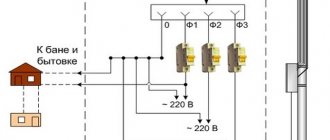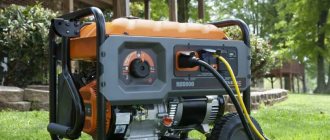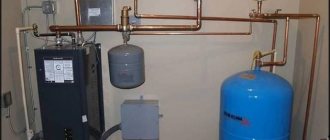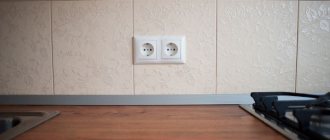Usually, for city residents, installing TV antennas is not a problem, but the issue of installation is relevant for people living in a private house or spending a lot of time in the country.
Installing satellite television is not the cheapest pleasure, and not everyone is willing to pay for it.
The optimal solution to the problem is to install an antenna, which you can install yourself. We will tell you how to install an analog receiver with your own hands in this article.
What kind of installation happens?
After purchasing the required material, make sure that the design contains fasteners. Be sure to treat the threaded part with oil or silicone lubricant.
After connection, you can seal it with waterproof silicone to avoid oxidation of the contacts.
Taking into account where the antenna will best receive the signal, you need to decide where exactly it will be located and at what height. Typically, antennas are located on the facade or on the roof.
Legal subtleties when installing individual antennas
If the owner of an apartment in a multi-storey building decides to install his own TV antenna on the roof, he may encounter some difficulties, which, taking advantage of the citizen’s illiteracy, will be caused by housing office workers. To avoid many misunderstandings, you should know the specifics of Russian legislation in order to be able to competently defend your rights. Firstly, according to the norms of the Housing Code, each homeowner is also a co-owner of the entire house, including the roof on which TV antennas are installed. That is, basements, attics and roofs can be used to your advantage, but in such a way that it does not infringe on the rights of other owners of this house. Secondly, this very roof is often quite difficult to get to. If the house has a HOA (homeowners' association), then getting the key to the attic will not be difficult. But if the house is under the patronage of the housing office, then the situation is much more complicated.
The fact is that, in accordance with the rules for the use of residential buildings, only employees of that same housing office can get into the attic and, in fact, the roof. If unreasonable obstacles arise on the part of its employees, you should know that, according to the Civil Code of the Russian Federation, every homeowner has the right to demand the opportunity to carry out their legal activities of using the auxiliary premises of the house in their own interests. In addition, according to the Constitution, each owner can exercise the right granted to him by law to operate his home (taking into account co-ownership) in his own interests. These arguments will moderate the ardor of any utility workers.
Choosing installation on the facade
One of the easiest installation options. This installation is easy to do yourself, but there is a significant disadvantage.
For better reception, the signal from the repeater must be of high power so that the device does not need to be raised high.
It is important to pay attention to what the walls of the house are made of. If the walls are made of brick or wood, this installation option is best suited.
The distance between fasteners should be no more than one and a half meters. For fasteners, use self-tapping screws or bolts.
In this diagram, number one is the antenna receiver, number two is a metal beam or pipe, number three is a bracket, and number four is a self-tapping screw or bolt.
In life it looks like this:
In the following video you can see how the installation takes place in this installation option:
Don’t forget that you can make such an antenna yourself, saving significantly on the purchase of the device.
Types of individual antennas
The antenna mounting technology primarily depends on its type. There are the following main types: wave, satellite, cellular.
Wave signal receivers are divided into two types: for digital television and all-wave. The latter can be considered universal due to the fact that they are capable of capturing a signal in any range.
Satellite dishes are very popular and widespread. They can be different both in size and in the material from which they are made.
The larger the antenna, the better and clearer it will receive the signal. As for the material, it can be: steel, aluminum, plastic and mesh material.
Steel plates are practically out of use, since they are highly susceptible to environmental influences, the material does not resist corrosion well and the structure collapses quite quickly.
Antennas made of plastic also performed poorly. With prolonged exposure to sunlight and sudden temperature changes, they are subject to deformation, which inevitably leads to a deterioration in the quality of signal reception.
The advantage of mesh antennas is that they are very easy to transport from one place to another, after first removing all the mesh mirrors from the structure.
But this type also has a significant disadvantage. Since the plate itself is quite large and light at the same time, it can simply be blown off the roof by the wind. Based on this feature, the mounting of such an antenna should be as strong and reliable as possible.
Cellular antennas are extremely rarely installed on the roofs of apartment buildings. This is due to the fact that for installation it is necessary to obtain a considerable number of official permits.
Maintenance of the structure is very inconvenient. In addition, there are often cases when residents file lawsuits demanding the dismantling of such antennas and these demands, in most situations, are satisfied.
Choosing a rooftop installation
This is the most popular installation option among antenna users. On the roof at a height, the antenna receives the signal best, and it can also be mounted on a small beam.
You can install the antenna on the roof on a special mast; there are clamps for this. The mast is made from a metal pipe several meters long, it can be prefabricated or solid.
The telescopic mast is considered the most comfortable design, since during repairs on the roof or inspections the antenna will need to be lowered, and with this design this is the easiest to do. You can service the device without outside help.
Installation difficulties
Setting up and installing an antenna with your own hands is a rather complicated process that is best done together. It is carried out in dry, windless weather, when it is more or less safe to move on the roof. However, during the installation process, craftsmen may encounter the following difficulties:
- High-altitude work. Installing any equipment on the roof is essentially high-altitude work, so the installer must have access to it, that is, undergo appropriate training. When working at height, it is imperative to use insurance and comply with safety requirements.
- Violation of roof tightness. Any mounting hole on the roof surface is a hole in the roofing material, which leads to a deterioration in its waterproofing qualities. Therefore, it is important to determine the optimal number of fastening points in order to securely fix the equipment but avoid leaks.
- Wind load. It is well known that the wind blows stronger on the roof, and the antennas, due to their high height, have a high windage, so they are subject to strong wind loads.
- Difficulty choosing an installation location. It can be difficult for an inexperienced technician to independently determine the place where the antenna should be installed in order to improve signal reception.
Please note that most often it is better to entrust the installation and configuration of roof-mounted equipment to professional professionals. Otherwise, you will have to perform the task together: one person will move the antenna along the roof, determining the optimal location, and the second will monitor the quality of signal reception from the TV.
How to fix the mast on the roof
There are different options with which you can attach the mast to the roof.
First option. Using the brackets, secure the mast to the chimney or ventilation structure. The brackets must be equipped with clamps that are bolted to the wall.
Under the first number is the mast, under the second is the bracket itself. Under the third labor chimney. Under the fourth is the bolt, under the fifth is the antenna itself.
Second option. Install the mast on the ceiling with fastening to the roof.
Number one is the device that receives the signal. Number two is the mast itself. Number three is the mount that attaches the antenna to the roof. At number four there is a block.
When choosing this installation option, you need to attach the mast to the ceiling in the attic. This is done using clamps, but do not be afraid to use bars.
Third option. Install the antenna using guy wires. When it is not possible to attach the antenna base to the roof, guy wires and cables can be used. But in this case, the base of the antenna must be equipped with lugs.
How to properly install a TV antenna
You need to install the TV antenna correctly, taking into account the terrain, obstacles to the propagation of radio waves, height, type of cable running from the antenna to the TV, and the state of the atmosphere. All this greatly affects the reception of the signal, and when it further passes through the radio circuits of the TV itself, primarily on the image on the screen. The desired image clarity may not be obtained only due to improper installation of the TV antenna.
Despite the wide range of ready-made outdoor TV antennas, many owners of private houses, for a variety of reasons, often install homemade antennas of various designs. Making such a structure is, of course, a fascinating task: I fastened together some pieces of iron, tubes, wires, lifted it to the roof, screwed it on, ran the cable and - sit down, dear guests, in front of a blue screen! But if, after making and installing a television antenna, you forgot about the matching devices, you can’t expect gratitude from the assembled spectators; they are unlikely to see the adventures of their favorite heroine.
How to route the cable
Installing a signal reception system also involves installing the appropriate cable. The cable must be installed in such a way that weather conditions have minimal impact on it.
The wire is laid parallel to the length of the antenna mast, with clamps included in the design, and then laid along the ridge of the roof, the wall to the window where the TV is located.
Where it is inserted into the window, the cable must be securely fastened. There must be a hole in the window frame for the cable.
To prevent rain or snow from getting into the hole, after installation the opening must be treated with sealant. The cable should have some slack to reduce exposure to temperatures.
Installation should be carried out in accordance with technical requirements. The staples should not put pressure on the wire, and the radius of the wire bends should not be too large.
Installation on pitched roofs
It is more difficult to install any equipment on pitched roofs, since it is difficult to move on them without insurance. In addition, the mounting holes in it pose an even greater threat in terms of holes, so installation must be treated very carefully. There are two ways to install antennas on a pitched roof:
- With the help of stretch marks. This technology consists of two stages: first, the antenna mast is installed vertically, and then it is firmly fixed using guy wires. Guys run from the top of the pole to hooks firmly screwed into the rafter legs of the frame.
- Fixation to the pipe. Chimney and ventilation pipes are often led out through the roof, to which it is convenient to attach masts for television signal amplifiers. This technology allows not only to fix, but also to reduce the wind load on the installed pole.
Fixation to the chimney pipe
Important! If the roof covering has a relief, then the television antenna must be mounted on the crest of a wave, otherwise water will flow into the mounting holes, leading to leaks and corrosion of the roof covering.
What to do with grounding
There is no need to bypass the antenna grounding. Typically, in summer cottages there is no system to help drain thunderstorms.
If lightning strikes, grounding the antenna will help avoid not only damage to the TV, but also a fire.
Some experts and electricians argue that this precaution is unnecessary because many people don't watch TV during storms.
You can create a lightning rod yourself by installing a grounding loop in a private house and having certain knowledge of the material.
This is all you need to know when installing an antenna in a private home. Thanks to this, your TV can work well and stably, saving significant money!
Necessary conditions for confident reception
One of the prerequisites for successful and reliable reception in the vast majority of cases, for example, for receiving satellite and television signals, is direct visibility between the transmitting and receiving antennas.
What does this mean? It's simple: the transmitting antenna, for example, a TV tower, is installed at the highest point of the landscape, this achieves the maximum coverage area, and the receiving antenna is yours. The main thing is that there should be no obstacles between these two antennas: hills, buildings, poles, fences, etc. That is, the signal from the transmitting station reaches the receiver along a forward vector, without encountering obstacles.
That is why the antennas are placed high above the ground: the higher, the less likely there is an obstacle between the transmitting and receiving antennas.
It is important to note here: if your house is located on a mountain, i.e., there are no obstacles between it and the transmitting station, then there is no point in “raising” the antenna high; a high location will not give any effect. It will be enough to use a simple bracket for the antenna on the wall, raising it 2-3 meters.
Otherwise, when the antenna is installed in a lowland, a sufficiently high mast is required to provide direct visibility, which will ensure reliable reception of a signal of sufficient strength.
The next thing you need to know about is directionality. In this case, we are dealing with the need to accurately orient the receiving antenna to the transmitting one. In other words: the receiving side of the antenna must be directed strictly in the direction of the transmitting station, this achieves the maximum level of the useful signal.
In some cases, in addition to positioning in the horizontal plane, clear orientation is also required in the vertical plane, in particular: the bracket for a satellite dish must provide for adjustment in both planes, and do this with high accuracy.
Another prerequisite is sufficient structural strength. When exposed to external factors: wind, shocks, precipitation, etc., the antenna must maintain its position and also not pose a danger to others.
For safety reasons, when installed outdoors, at a sufficiently high altitude, it is necessary to provide protection against lightning strikes, which will avoid damage to equipment, the possibility of fire and electric shock to people during a thunderstorm.
About legal difficulties, laws and fines
When they talk about the legal side of installing an antenna on a roof, they usually mean the legal difficulties of installing it on the roof of an apartment building. At the same time, it is believed that the owner can install anything on the roof of a private house. But that's not true.
Legal features of installing an antenna to enhance cellular communications
If we are talking about a simple television antenna or satellite dish, then there really are no restrictions. But when you need an antenna for the Internet in a private home or strengthening a cellular signal, the rule “my roof is my business” does not always work. Such antennas can be equipped with repeaters - devices that further amplify the signal. At the same time , repeaters make communication better for you, but create interference, sometimes very significant, to everyone around you . Powerful repeaters can even interfere with the operator's base station.
Until recently, it was possible to install GSM signal repeaters and 3G/4G Internet amplifiers freely. But on June 2, 2016, Federal Law No. 161-FZ “On Amendments to the Code of the Russian Federation on Administrative Offences” came into force, according to which unauthorized installation of uncertified means of enhancing communications now faces a fine and even confiscation of the equipment. For individuals, the fine is 3,000-5,000 rubles, for officials - 15,000-30,000 rubles, for legal entities - 60,000-300,000 rubles.
If you need to install wireless Internet into your home, then such a ban is not critical. Separate amplifiers are rarely used to improve the Internet signal - a powerful parabolic antenna for a private home will pick up a signal from a base station at a distance of up to 25-30 km without auxiliary equipment. If the goal is to strengthen the cellular signal, then serious problems arise here.
The GSM signal amplification system includes a repeater - without it it simply will not work. And at the moment, almost all repeaters and 3G/4G signal amplifiers that can be bought in China and other countries are not certified in Russia. At the same time, most systems for improving cellular communications, especially homemade ones, are built on the basis of cheap Chinese repeaters. This means that such systems are illegal . With all the ensuing legal consequences, it is worthwhile for employees of cellular operators to discover the system. And it's only a matter of time.
Therefore, we recommend not to take risks and follow the following rules:
How to install an antenna on the roof of an apartment building
It is not always possible to install a satellite dish on the facade of an apartment building - the windows of the apartment may face the side opposite to the desired direction, and obstacles may interfere with the signal. In addition, the installation of such structures on the facades of historical buildings is generally prohibited, and in this case there is only one way out - the roof.
According to Articles 289 and 290 of the Civil Code of the Russian Federation and Articles 36 and 37 of the Housing Code of the Russian Federation, the common property in an apartment building, including the roof, belongs to the owners of the premises. Therefore, on the one hand, the management company or housing office do not have the right to refuse access to the roof. On the other hand, representatives of the management company or housing office may require dozens of documents: from a letter of guarantee, in which you undertake not to damage the integrity of the roof, to design documentation and full specifications for all equipment. These documents will have to be provided. In addition, the antenna on the roof of an apartment building must be installed by specialists with permission to work at heights.
If everything is in order with the documents, then they can refuse you only in two cases:
In the first case, nothing can be done - local authorities can introduce such bans. But in the second case, the decision can be appealed to a higher authority or in court.
If the house is managed by an HOA, then the issue of installing an antenna on the roof is decided at a meeting of apartment owners. A majority must vote for permission to install. If the meeting of owners refuses to issue a permit, then you will have to come to terms with this - there are no other levers other than a repeated vote to resolve this issue.
Necessary equipment
There are several digital broadcasting standards. In the Russian Federation it is DVB-T2. The list of necessary equipment to search for free TV channels varies depending on the equipment already available. However, there are several generally accepted devices that you cannot do without.
1. UHF antenna for receiving digital TV.
A meter TV antenna will not provide adequate signal reception. On the modern market there is a wide range of indoor and outdoor antennas. The choice of device type depends on the subscriber’s area of residence. For example, in dachas and country houses, users install and connect outdoor digital antennas to watch television. They have a high level of power and guarantee excellent reception.
The reliable reception zone is the minimum distance from the TV tower. In such areas, you can safely use a regular indoor antenna. This option is especially suitable for owners of apartments located on the upper floors. Because the amount of interference is automatically minimized: trees, buildings, landscape. Before installing the antenna, be sure to determine the distance to the nearest repeater.
2. Signal amplifier.
Some antennas have a built-in amplifier, but this device can also be purchased separately. Not in all cases an amplifier will improve the broadcast quality. This is explained by the fact that it affects not only the direct signal, but also the one reflected from all kinds of obstacles. For example, in densely built areas, the use of an amplifier will significantly reduce the quality of reception. Therefore, this device should only be connected in cases where it is truly necessary.
3. TV.
Obviously, without TV it is impossible to set up digital. Relatively recently released models are equipped with a DVB-T2 module. This means that owners of such equipment will be able to do without a receiver. Older TVs provide support for the DVB-T standard, which is not compatible with the current standard used in the Russian Federation.
4. Digital receiver.
The last point, but by no means the least important. Owners of old TVs that are not equipped with a DVB-T2 module will have to additionally purchase a set-top box capable of displaying a radio signal
It is important that the receiver must support the DVB-T2 standard. Such devices are relatively inexpensive - from 500 rubles and above
The price is affected by the range of functionality.
Types of antennas and features of their installation
An antenna is a device that receives a weak signal and amplifies it. The shape and dimensions of the antenna depend on the type of signal.
TV antenna
The most common type of antenna. Most often, a television antenna looks like a long rod with tubes that are inserted at a certain pitch. They can be either passive or active, with an amplifier installed on them. Unlike cellular base stations, which work both to receive and transmit, television towers only distribute the signal, so antennas with amplifiers do not interfere with their operation.
where to go to allocate a share in an apartment
For installation on the roof, it is better to buy a “wave channel” or log-periodic antenna. They are made from relatively thick steel tubes, so they do not deform even when exposed to strong winds. It is not recommended to install various types of antenna arrays on the roof - thin twigs are easily bent even by a bird landing on them, not to mention the wind, so the antenna will have to be regularly repaired or replaced.
Since Russian TV towers have completely switched to broadcasting using the DVB-T2 standard since 2022, completely turning off analogue over-the-air channels, digital antennas are being installed on the roofs of private houses to receive the signal. They are installed on special masts, the height of which depends on the terrain, as well as the distance from the television tower. As a rule, for stability, the masts are fixed to the roof with guy wires, and if the height is more than three meters, with two rows of guy wires.
Satellite antenna
This is a characteristic “plate” that can often be found on the roof of private houses. Thanks to its semicircular shape, the satellite dish on the roof of the house seems to collect a signal from the satellite and focus it on the converter. Moreover, the larger the “dish” area, the better it focuses the signal. However, with increasing diameter, a satellite dish on the roof better catches not only the signal, but also the wind, so when choosing its size, you should not get too carried away: for each satellite there is a coverage map, which indicates the transmit power in dBW and the recommended antenna diameter depending on power values. For example, for the Express AM 22 53.0°E satellite, the coverage map and satellite dish size table looks like this:
In order for the satellite television image to be of high quality not only on a clear day, but also in the rain, it is better to take a dish that is designed for lower power. A reserve of 2-3 units of power is considered optimal. This means that with a signal power of 46 dBW, it is better to buy a roof antenna with a diameter of 1.34-1.5 m rather than 1.07 m.
In addition to the size, you need to take into account the design and material from which the satellite dish is made.
Depending on the shape of the dish, antennas for domestic use are:
Now let’s talk about which of the listed satellite dishes are best suited for installation on the roof. The standard solution is offset satellite dishes, on which almost no snow accumulates in winter. An advanced option is toroidal satellite dishes. But they are expensive, and they only make sense if you need to receive a signal from 4-5 or more satellites at once. Installing a direct-focus type satellite antenna on the roof is not recommended, since whole snowdrifts grow on the mirror turned to the sky in winter, which interfere with signal reception, even completely blocking it, and create a significant additional load on the rafter system.
As for materials, satellite dishes are made of steel, aluminum, and even plastic.
Steel plates are the cheapest, but over time they begin to rust, which affects the quality of the image and, more importantly, the reliability of their fastening - corrosion usually begins at the edges and near the mounting holes.
Aluminum satellite dishes are more expensive, but they are practically not subject to corrosion - when oxidized, the aluminum is covered with a thin film that protects the metal from further destruction. But they require a special bracket for attaching the antenna to the roof: aluminum is light and not the strongest metal, so the dish can simply be torn off the roof by a strong wind. To prevent this from happening, larger area fasteners are used for aluminum antennas.
Plastic satellite dishes have appeared on the market relatively recently. Apart from price, plastic dishes have no special advantages - they weigh even less than aluminum antennas and are not subject to corrosion, but the reflective surface of plastic wears off quite quickly, and its strength leaves much to be desired. Therefore, plastic satellite dishes are more of a travel option. They cannot be placed on the roof.
Antenna for strengthening the signal of cellular communications and mobile Internet
3G/4G and GSM antennas come in three types:
For a private home, it is better to buy panel-type antennas. They are compact and easier to mount on the roof. If the house is built in the wilderness or there are sources of strong interference near it, then choose directional antennas. Omnidirectional structures are used in urban areas because they receive the reflected signal well.











